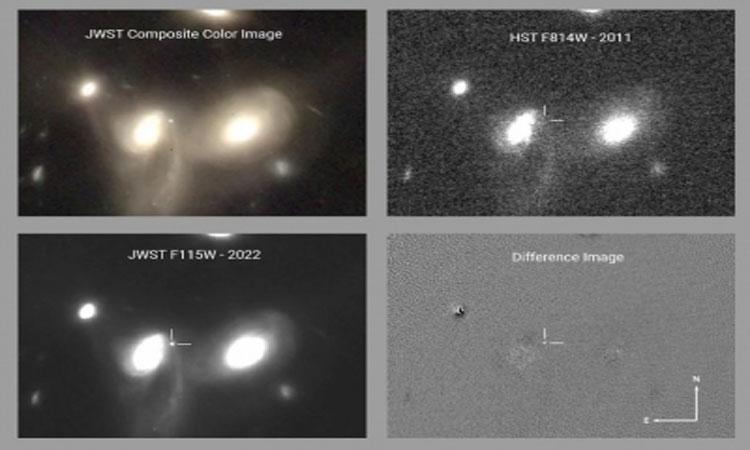The powerful next-generation James Webb Space Telescope may have likely spotted its first supernova, according to astronomers.
According to Mike Engesser of the Space Telescope Science Institute (STScI), the object is extremely bright compared to the rest of the galaxy.
And Webb observed the galaxy, called SDSS.J141930.11+5251593, twice, five days apart; the object dimmed, just slightly, over those five days -- classic supernova behaviour, Inverse reported.
"We suspect it's a supernova," Engesser was quoted as saying.
"We would need more time series data to make a determination, but the data we do have does match that of a supernova, so it's a very good candidate," he added.
The $10 billion Webb telescope, is an international programme led by NASA, the European Space Agency and the Canadian Space Agency.
The telescope's actual aim is to solve mysteries in our solar system, look beyond distant worlds around other stars, and probe the mysterious structures and origins of our universe and our place in it.
"Primarily, it's exciting because we have shown that we're able to find and detect new transients with Webb, which was something that JWST is not designed to do. But it's one of the things we're showing we're able to do in sort of an ad hoc way," he noted.
Webb is designed to look much, much deeper into smaller patches of sky. The telescope's first deep-field image, released on July 12, covers an area of sky that one could cover with a grain of sand held at arm's length.
"So the actual likelihood that you'll find a transient in the field you're looking at is fairly small -- or at least we thought it would be small," Engesser said. "But as you've probably heard, every JWST field is a deep field at this point, so there's galaxies everywhere, and now we're thinking, oh, we might have a really good chance of detecting supernovae all the time."


















